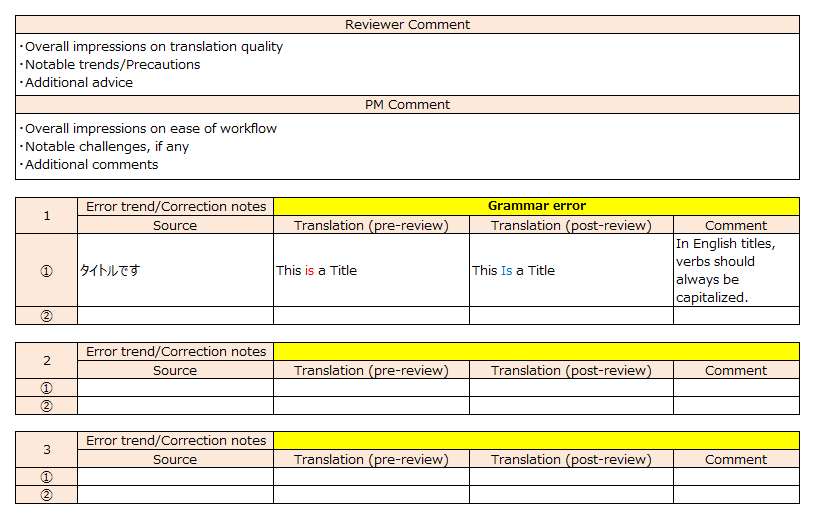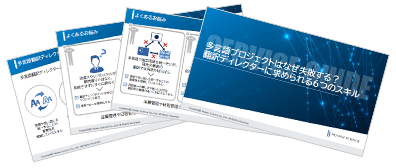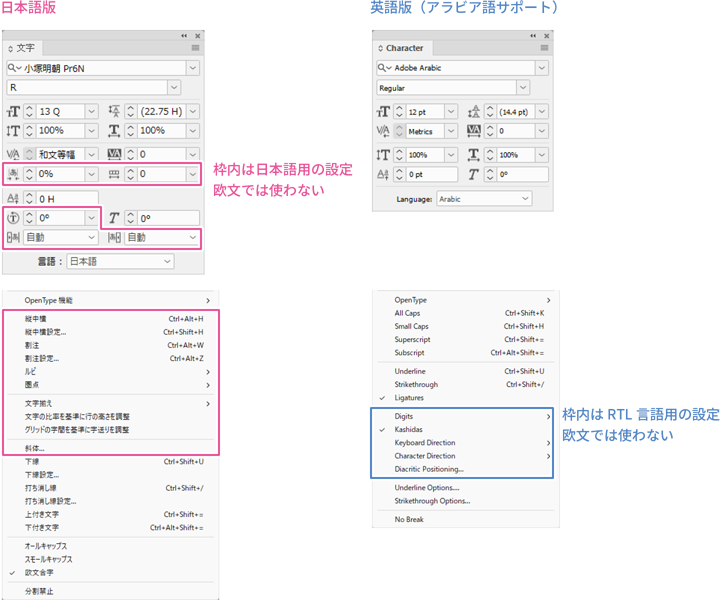
When translation is a pivotal aspect of your business, fostering communication with your translators is crucial to solidifying the quality of your translated materials and ensuring satisfaction in the finished products. A lot of this communication comes up-front, as you discuss your expectations with the translator and provide materials such as translation glossaries, style guides, reference documents, and other specific instructions. However, if your relationship with the translator or translation company is longstanding, or if future work can be expected, providing feedback is an equally powerful resource that can not only reassure the translator in their performance but also lead to improvements in future work.
The purpose of feedback for translation is to acknowledge the strengths and benefits that a translator has shown through their work and to highlight any areas where expectations were not met or where improvements can be made. This demonstrates care and respect for the work that the translator provides and encourages certain behaviors and execution in future translations. Ideally, a dialog of mutual respect can develop, and the translator will take special care to address the points mentioned, leading to fewer mistakes and undesirable translation passages in the future. Ultimately, the goal of providing feedback is for future translations to improve, because better, more reliable translations means that less time and effort has to be spent on review, editing, and quality assurance.
And yet, according to many of the translators that Human Science works with, our company’s provision of targeted feedback is unique, compared to other translation companies, but it is highly valued as a useful resource. In the experience of these translators, most companies return the fully edited files to the translators without commentary, if they provide any feedback at all. How that compares to the Human Science feedback method will be explained in more detail below.
Ensuring that the creation of feedback fulfills its purpose in a cost effective way is essential. The difficulties that may arise when trying to provide translation feedback are the issues of spending too much time drawing up the feedback and/or wasting time on feedback that is ineffective. Let’s look at the second issue first. How do we ensure that the feedback is effective?
What Makes Feedback Ineffective?
One of the more disheartening experiences that every translator encounters at some point is receiving a “corrected” version of their translation that is completely covered in stark, red proofreading marks. For translators who take personal pride in the work that they produce, heavy edits can feel like a cruel rejection, a feeling that is immediately off-putting and may inspire a stubbornly defensive stance that deflects even the most well-intentioned criticism.
Even translators who are grateful to receive comprehensive corrections may be overwhelmed by the number of changes that their translation undergoes, especially when the stylistic preferences of the document’s reviewer are marked with the same level of importance as actual mistakes. In such cases, it is impossible for the translator to know what changes are critical and for what reasons they were made. Therefore, very few lessons can be gleaned and retained for future jobs. So while it may seem time efficient for you to forward all of the reviewer’s changes to a translator as a form of feedback, this method is relatively ineffective. The variety and volume of changes can be simply too numerous to prove informative.
Instead, the person creating the feedback should select only a few of the corrected passages to present, along with indications and/or explanations for why the corrections were made. This allows you to draw attention to the issues that are most important to fulfilling your translation orders and also justify your reasoning for why particular changes were necessary, in case the translator is resistant to translation adjustments. It also ensures that the translator is not overwhelmed by the total volume of changes, but has a manageable number of points to remember and focus on in the future.
How to Select Feedback Examples
Now, knowing that not all changes should be compiled into feedback, how does one choose which corrections are worth highlighting? The following three points should be taken into consideration:
Is the mistake prominent?
Is the mistake fixable?
Is the mistake applicable to future documents?
1. Is the mistake prominent?
Everyone makes mistakes, but unless there is absolutely nothing left to criticize, drawing attention to small, one-off errors is generally not useful as feedback. If only one in a few hundred translated passages contains a spelling mistake or punctuation error, drawing attention to it will not have a substantial impact on the quality of future translations. However, if an issue, even an infrequent one, is of critical importance, or if an issue is small but occurs repeatedly, then including it in your feedback should be considered.
For example, if at one point the translator mistranslates integral information that would completely mislead the reader in a way that could cause harm to a person, property, or the reputation of the company, then that point should absolutely be addressed. Similarly, if the translator exhibits a quirk that does not necessarily mislead the reader but must be fixed multiple times in every file, that could also be chosen for feedback, provided it meets conditions 2 and 3.
2. Is the mistake fixable?
Some types of mistakes, while they can be caught and corrected by a reviewer, are much more difficult for the translator, themselves, to fix. More specifically, certain peculiarities of language must be learned through time and practice and cannot be internalized by the translator through simple feedback.
For example, non-native English speakers may have trouble knowing which preposition to use in what scenario. After all, a person rides in a car but on a bus, and no real logic follows for riding trains, boats, planes, and helicopters. Pointing out examples of various preposition errors to a translator will not necessarily fix the problem for next time. These nuanced quirks of language must be practiced and developed over time. Therefore, issues whose solutions are more easily identifiable should be prioritized instead.
3. Is the mistake applicable to future documents?
Some errors are only relevant to the current document and have no direct applications in the foreseeable future. Perhaps the file has a unique rule exception or is a document type that is not usually requested. For example, if most of the files that require translation are instruction manuals, but you request a single marketing presentation as well, style-related feedback could actually have a negative impact if applied to the more common technical documents. In this instance, refraining from marketing-specific feedback would actually be better, because such mistakes aren’t applicable to the other documents.
Our Approach to Translation Feedback
Below is an example of the feedback sheet that Human Science uses to provide feedback to our Japanese to English translators. This format focuses on the categorization of errors and the inclusion of comments, while limiting the number of actual examples. This restriction not only helps to direct the translator’s attention to the issues that are most important, but also ensures that the person compiling the feedback (often the reviewer) does not spend an inordinate amount of time looking for examples and copying data from the original file.

Note that in order to draw the translator’s attention to recurring errors that require more care, the selected correction examples are grouped by error type. The yellow box is a drop-down list of many error categories, including grammar error, mistranslation, tag error, spelling mistake, discriminatory language, and more. To avoid wasting time by unnecessarily identifying all instances of the mistake, up to two exemplary passages are chosen and copied, and the necessary corrections are explained. Furthermore, to avoid overwhelming the translator with too many areas of focus for the next translation job, a maximum of three error types are highlighted in each feedback sheet. The aim is steady, reliable improvement over time. If the feedback creator wants to caution the translator on additional error trends or points of interest, they may do so in the comment box.
The comment boxes exist for the reviewer and project manager to positively reinforce the ways in which the translator’s handling of the job was particularly good or improved, to overview any existing problem trends, and to document additional observations that may not be as urgent or severe as the featured errors but do warrant the translator’s attention.
Conclusion
The quality of a translation can have an extreme impact on how well your products are received on the market and whether the users and others who interact with your products have a positive experience. After all, a badly worded marketing campaign can turn away potential buyers, and badly written instructions can lead to misoperation of the very product that you worked so hard to create.
In the same way that products undergo testing and developments, translations benefit from clear and direct feedback, to correct the flaws and smooth out the style. When you take the time to build a relationship with your translators and offer guidance on where their translations succeed or struggle, you are investing in the quality of your international image and raising the expectations of your potential clients and investors. But this feedback must be smart and targeted in order to be effective. Identify problematic trends with clear, executable solutions and address your concerns at a regular, digestible pace to build trust with your translators and elevate the quality of their translations with a degree of effort that is still able to produce economic returns.
For more tips on how to improve the quality of your translation orders through proper preparation, be sure to check out the following!


























